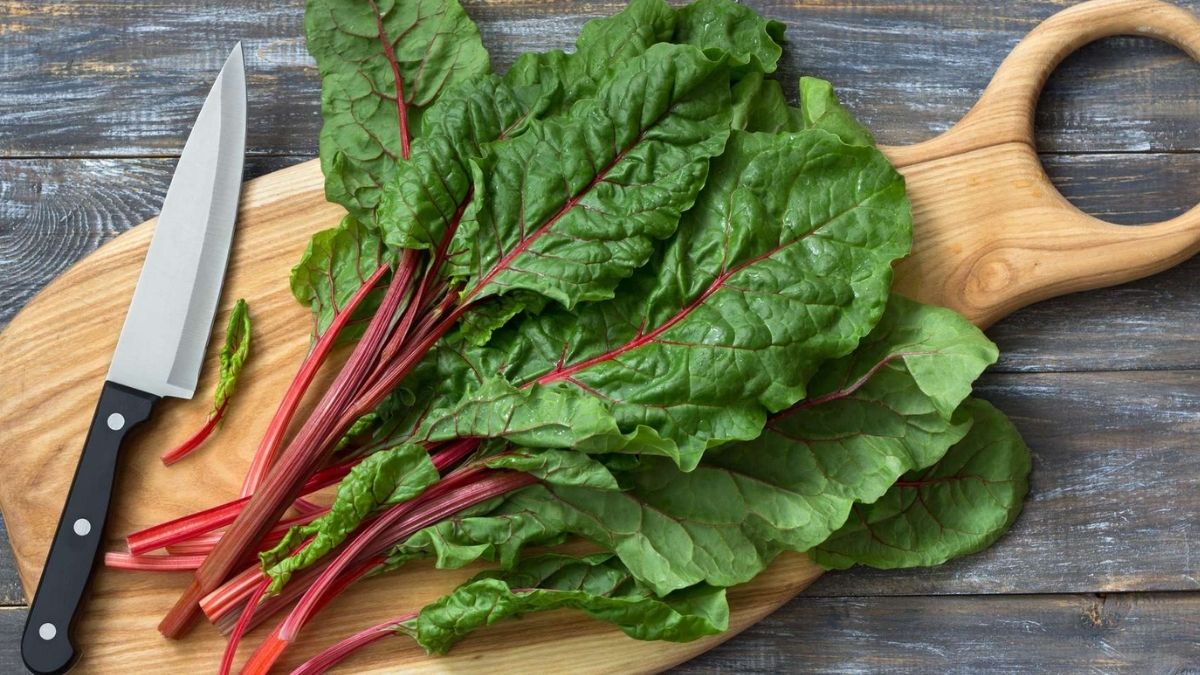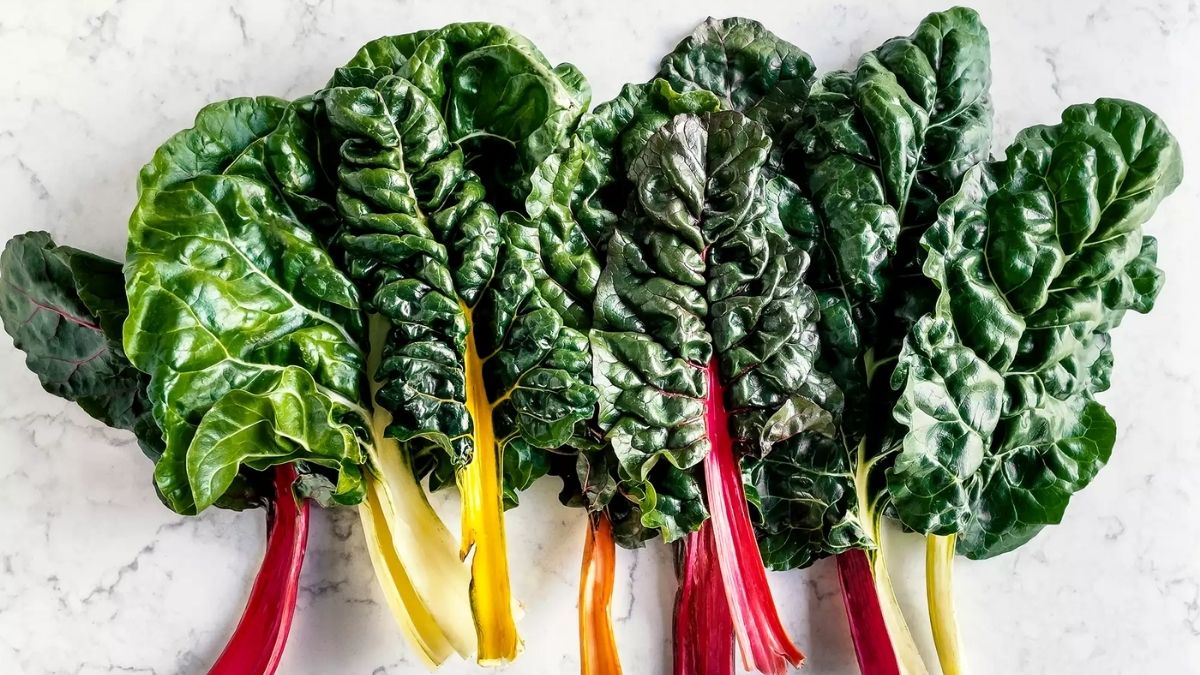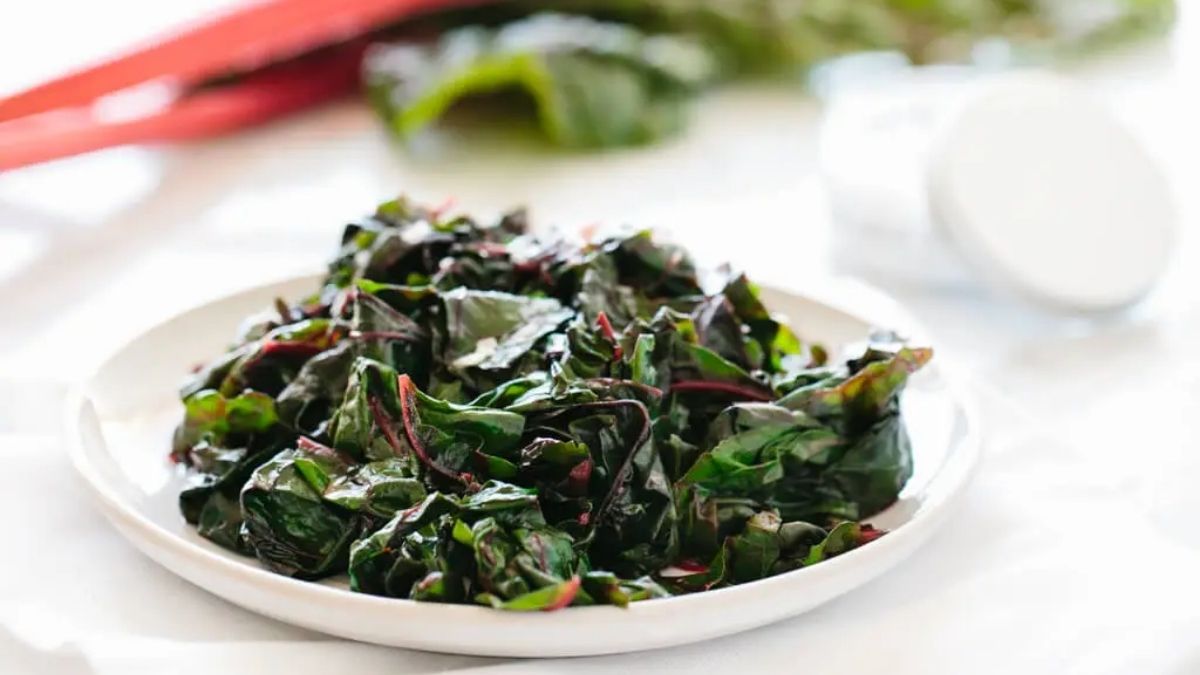Chard is a dark green leafy vegetable that is popular in Mediterranean cuisine. It’s trendy in Italian cuisine and used in pasta dishes, risotto, and even pizza. While Swiss chard is the most well-known, it is also available in red and golden varieties. It’s simple to prepare, regardless of color, and you may use it in various ways.
Chard is a green, bright vegetable that belongs to the beet family. While beets are mainly grown for their root (though many people also enjoy beet greens), chard is grown for its stems and leaves. Swiss chard, silverbeet, bright lights, seakale beet, white beet, strawberry spinach, leaf beet, Sicilian beet, Chilian beet, Roman kale, spinach beet, crab beet, eternal spinach, or mangold are some of the other common names for chard.
Chard is one of the most eye-catching greens at the farmers’ market, with its bright and vibrant stems. The leaves can be sliced into ribbons and served fresh in salads, sautéed with the stems, or stewed in a stew. You may replace kale with this leafy solid green that doesn’t wilt readily in your next salad.
What is Chard?
Chard is related to beets and is usually referred to as Swiss chard (one cultivar). Chard greens resemble beet greens in appearance. However, unlike beets, the root of chard is not edible. The grooved, bumpy texture of the green leaves runs up a colorful, sturdy stem. Although both sections are edible, they cook at different speeds. Bright Lights, Chilean beet, mangold, everlasting spinach, Roman kale, silverbeet, spinach beet, and white beet are various names for this green vegetable.
The variety of hues in chard is typically the most apparent feature. Each varietal’s stems are a different color, ranging from white to purple. The most popular colors are white, gold, and red; Swiss chard is the white-stemmed kind. Rainbow chard is essentially all of these types bundled together for market sale. Chard is slightly more expensive than other greens in general. Chard is simple to prepare, whether raw or cooked—rinse and remove the stems if desired—and it adds a splash of color to the dinner table.
Chard vs. Kale
Chard is similar to any other leafy green, and it’s most similar to spinach in taste and cooking, but it’s also worth comparing to kale. The texture of the leaves of the two vegetables is similar: crinkled, crisp, and dark green. Both benefit from having the stems removed, while chard stems can be cooked until tender, while kale stems will not tenderize and should be discarded.
The a significant difference in the flavor. Kale has a strong, earthy, slightly bitter flavor that not everyone appreciates, and Chard is much milder and more accessible than kale. In fact, despite their best efforts to convince everyone to eat kale, many families find that chard is more readily accepted when trying to eat healthier.
What does Swiss Chard Taste Like?
When eaten uncooked, most types of Swiss chard are earthy and delightfully bitter, similar to spinach. While not as bitter as kale, Swiss chard’s bitterness fades as the leaves simmer, giving them a gentler, sweeter flavor and a more tender texture. The ruby and rhubarb kinds, on the other hand, have a slightly more robust flavor than the rest. On the other hand, the stalk has a distinct profile, and it has a texture similar to celery and a flavor similar to earthier beets. Because the leaves and the stalk have different flavors, you may choose to separate the leaves from the stem and cook them separately.
This stalk is thicker than the leaves. Thus, cooking time will be longer. All types, however, can be utilized in recipes that call for greens. The chard flavor is similar to that of spinach, depending on how it is prepared. Swiss chard, in particular, can be bitter. Cooking reduces the bitterness, allowing the earthy, sweet, almost beet-like flavor to shine through. When eaten uncooked, chard’s lush green leaves are sensitive and bitter. When cooked, the sharpness fades, leaving a mild, sweet flavor akin to spinach.
How to Cook with Chard?
Younger chard leaves can be eaten raw in salads, and the older leaves are more complex and should be cooked. The stems and ribs from the centers of the leaves, as with collard greens and kale, should be removed because they can be rough and fibrous. Some people prefer to cook the stems separately, similar to how asparagus is cooked. Sautéing chard is one of the best methods to prepare it. It can also be cooked using moist heat techniques like steaming or dry heat techniques like grilling or roasting.
Because the leaves can hold dirt, chard must be thoroughly cleaned before use. You should also remove any damaged portions and the very bottom of the stem. Fold the leaf in half and cut it close down the stem to remove it from the stem. The leaves and stems can then be prepared according to your recipes.
Is Chard a Beet?
In truth, chard is a beet that has been engineered to grow plump, juicy stems and large leaves rather than focusing its energy on large roots. The plant was created by ancient Sicilians who liked beet greens. Chard (Beta vulgaris) is also known as spinach beet or leaf beet, and the two plants have the same biological name, albeit chard is Beta vulgaris v. cicla. The common beet is grown for its fleshy root, whereas chard is grown for its leaves.
How to Prepare Chard?
Stems and leaves require different treatments. Chard stems have always been a source of contention since the beginning. It was initially grown for the crisp, spacious stems, which can be cooked, steamed, or stir-fried on their own. Nowadays, many individuals believe that the stems should be discarded because the leaves are a significant attraction. Adding the stems to the pot or skillet a few minutes earlier, then adding the faster-cooking chopped leaves afterward, is an excellent middle ground that wastes less.
Blanch and Boil
Chard leaves are made up of open cells that collapse when cooked, much like all leaves. A large pile of leafy greens will cook down to a fifth of its original size after being wrung out. When you blanch chard first, it stays wet and soft, making it a helpful addition. Place the cut stems in a pot of boiling water for one minute before adding the leafy sections. Return to a boil and cook for another minute until the leaves are soft (leaves will darken a shade). Drain and rinse under cold running water. Squeeze the leaves out, and you’ve got a ready-to-use ingredient for everything from sandwiches to pasta, lasagna, frittatas, and even scrambled eggs.
If you want to make an excellent presentation, blanch the whole leaves, stems, and all, and dry them thoroughly before using them as grape leaves. To bake in a covered casserole, wrap cooked grains, or even a herb-smeared chicken breast or fish fillet.
Saute, Roast, or Even Grill
You don’t have to blanch chard; a fast sauté in a hot skillet with delicious olive oil or a spot in a stir-fry will suffice. You can even roast it in the oven, just like the popular kale chips: mix with a bit of oil and bake for around 10-15 minutes at 350 degrees F. Some grill aficionados even do it the same manner, with oil and a little heat.
Soups
Chard also works well in soups; you can skip the blanching step and add it at the end of the cooking process. With a few handfuls of chopped chard, spaghetti sauce becomes especially veggie-rich. Beans and greens are a natural match, so once you’ve got a pot of beans simmering, add chard for a simple peasant stew that you can turn into anything from chili to curry. Baby chard is tender and can be used raw in salads or shredded into slaw.
Almost Any Recipe that calls for Cooked Greens
The Swiss chard’s Mediterranean roots indicate that it will pair well with bold flavors. Garlic, chilies, olives, and tomatoes stand up to the enormous green leaves’ minerally vegetal qualities. Of course, any cuisine that cooks greens has fantastic flavors to pair with chard, from Indian spices to Asian soy/sweet and sour flavors to spicy flavors from south of the border.
Where to Buy Chard?
Rainbow chard bunches are simple to distinguish amid the leafy greens in a vegetable market when they’re available. Many supermarkets sell chard, especially during the summer, when the crop is at its greatest. It’ll cost more than spinach or lettuce, and it’ll be grouped with specialized greens like kale. You might also get it at farmer’s markets, and chard is a simple vegetable to grow in containers or gardens. It can be planted twice a year—in the spring and again in the fall—and it will live all year in some areas, such as the Pacific Northwest. Choose chard with bright green leaves and brightly colored stalks that are firm. Any bunches with withering leaves or those that are turning yellow should be discarded. Another sign that the chard isn’t as fresh as it should be are brown stems.
How to Store Chard?
Separate the leaves and stems and store them separately in the refrigerator for up to one week for the best results. Layout the leaves on paper towels, then roll them into a bundle and sell them in a plastic bag. Plastic can also be wrapped around the stems. Chard can be kept in the refrigerator for a few days if left intact and wrapped with plastic. Before storing chard, make sure it’s scorched first. If not, rinse it before using it.
Chard can be frozen for up to a year. However, it is best fresh. Separate the stems and leaves to be used separately if necessary. Blanch the stems for 2 minutes and the leaves for 1 minute in boiling water. Drain the chard thoroughly before separating it into freezer bags with as little air as possible. The stems can be kept for a longer time. You may keep a jar of fermented chard stems in the refrigerator for three to six months by fermenting them in water. It’s a tasty salad topper.
Conclusion
Chard is a good source of vitamins A and C, and it’s a popular home-garden vegetable due to its ease of cultivation, productivity, and tolerance to somewhat hot weather. See beet and sugar beet for related cultivated variants of B. Vulgaris.
Although chard is a biannual plant, it is usually grown as an annual. The plant does not have fleshy roots like other B. Vulgaris variants. Its vast leaves can reach a length of more than 30 cm (1 foot) and can be harvested throughout the growing season. However, production slows in the summer. Some cultivars, dubbed “rainbow chard,” have colorful stems that range from red to orange to yellow to pale green. White-stalked variants are frequently called “silver chard,” whereas red-stalked varieties are called “rhubarb chard.” Deep freezes kill the plant, but they can survive in milder climes. Chard flowers in its second year, when the leaves are bitter and unpleasant to eat.


